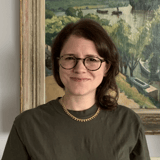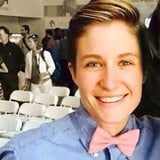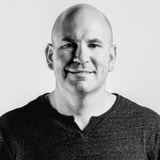Summary
In this panel, Meredith, Bria, and Tim explore their current passions and key trends around design operations. Meredith highlights her new podcast Reconsidering and the growing interest in re-evaluating careers and values, tying it to broader personal and professional shifts. Bria shares her experience transitioning from sales enablement into design ops, underscoring the importance of transferable skills and the freedom to shape the emerging design ops field. Tim discusses the rise of purpose-built communities and the need to extend corporate experience models beyond traditional settings. Together, they address challenges caused by multiple ops teams within organizations, potential chaos from overlapping roles, and underutilization of design ops skills. They emphasize the strong human-centered nature of design ops, contrasting it with automation, while acknowledging the need to balance efficiency with culture and people management. The panel also underscores the importance of advocating for design within broader product orgs and foresees that future design ops practitioners will benefit from deep business acumen including finance and organizational strategy. They conclude by reflecting on how staffing levels affect automation and overall effectiveness within design operations, leaving open the future evolution of the discipline.
Key Insights
-
•
Design ops practitioners benefit from diverse transferable skills beyond UX, including sales, finance, and branding.
-
•
There is a growing risk of multiple ops teams (design, product, research, HR) causing organizational chaos and diluting ops value.
-
•
Design ops currently require a scrappy, hands-on approach but will evolve toward specialization and clearer role definitions.
-
•
Human-centeredness is a core differentiator of design ops compared to pure automation or process management.
-
•
Future design ops roles will demand stronger business and organizational strategy competencies, including P&L understanding.
-
•
Advocacy and self-promotion are vital for design ops practitioners since their work often goes unnoticed when successful.
-
•
Automation in design ops should be guided by human-centered guardrails to balance efficiency without sacrificing team culture.
-
•
Design ops is positioned to help redesign how businesses operate, beyond just optimizing design within org structures.
-
•
The rapidly evolving field offers opportunities for practitioners to shape and define their roles and industry best practices.
-
•
Staffing adequacy greatly impacts design ops’ ability to support organizations effectively and to innovate beyond automation.
Notable Quotes
"The one thing I’m really excited about is re-evaluating what people want to do for work and how personal values inspire career shifts – Meredith."
"I’m a really passionate tools person. Transferable skills can be used in such a creative, UX-first way – Bria."
"I couldn’t imagine a product team having design ops, product ops, and research ops all at once without chaos – Meredith."
"Design ops people have a hard time advocating because we’re behind the scenes. If things mess up, everyone knows it’s us but if it goes well, we get no recognition – Meredith."
"Design ops is not all about automation; if it got too automated, we’d lose the human aspect – Meredith."
"There’s an opportunity to inject human centrality into product ops by balancing business value and customer experience – Meredith."
"Our industry is so new that we can make design ops whatever we want it to be – Bria."
"Future design ops folks will need skills in organizational strategy and understanding how to redesign the business – Tim."
"Automation frees up time so we can do more for the org, but it must have guardrails centering on people, not just business – Tim."
"We make organizations run better than they could without us, that’s the biggest part of design ops – Meredith."
Or choose a question:
















More Videos

"If designers spend more time talking about titles than their work, we’re just gazing into our navels."
Adam Cutler Karen Pascoe Ian Swinson Susan WorthmanDiscussion
June 8, 2016

"If you’re doing a lot of work that’s not in your job description, you might actually be doing leadership."
Peter MerholzThe Trials and Tribulations of Directors of UX (Videoconference)
July 13, 2023

"Everything that has been put online, someone like us made and put there; we bake our own biases into it."
Lisa WelchmanCleaning Up Our Mess: Digital Governance for Designers
June 14, 2018

"Investing in sustainability today will yield dividends for future generations."
Vincent BrathwaiteOpener: Past, Present, and Future—Closing the Racial Divide in Design Teams
October 22, 2020

"It matters what you build, but it matters more if you learn."
Brenna FallonLearning Over Outcomes
October 24, 2019

"We are all experiencing a spatial collapse, a disruption of our mental models of how we navigate physical and virtual spaces."
Tricia WangSpatial Collapse: Designing for Emergent Culture
January 8, 2024

"Diverging and converging around the business model canvas helped us test and prototype delivery methods for the value propositions."
Edgar Anzaldua MorenoUsing Research to Determine Unique Value Proposition
March 11, 2021
"With proper maintenance, knowledge becomes a vehicle that probes the most hidden spaces of possibility and brings the best decisions to the surface."
Designing Systems at Scale
November 7, 2018

"If my experiment made front-page news tomorrow, what would the headline be? Would my mother be proud?"
Erin WeigelGet Your Whole Team Testing to Design for Impact
July 24, 2024


















